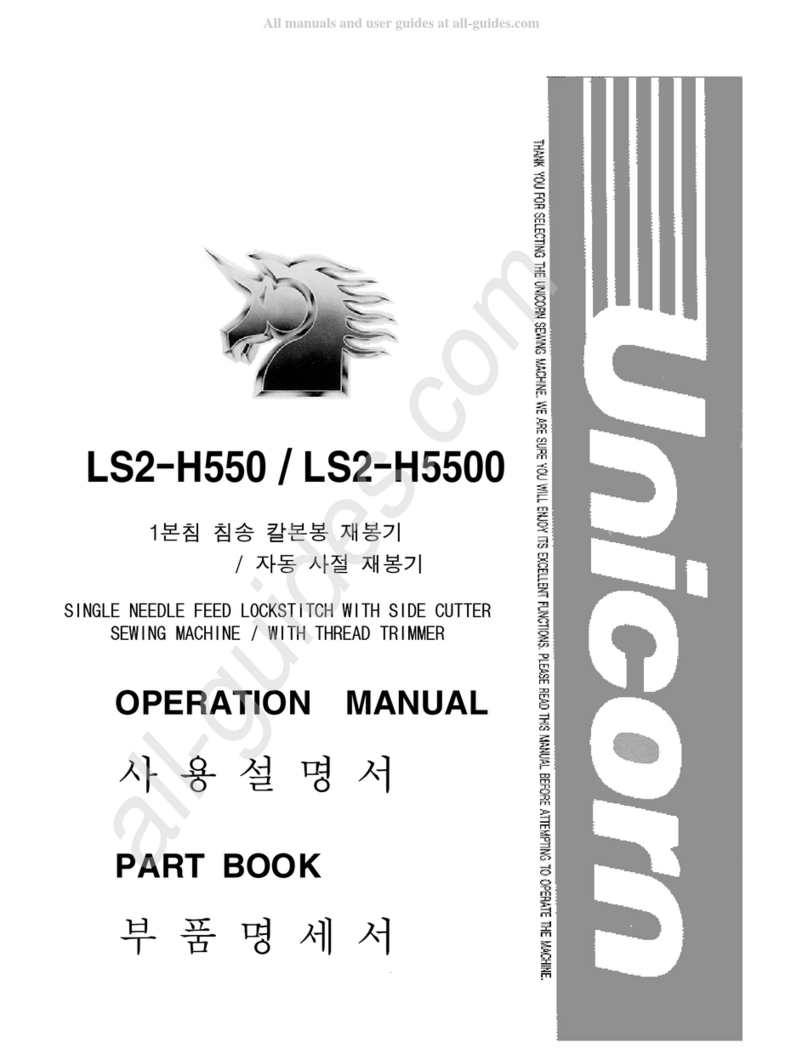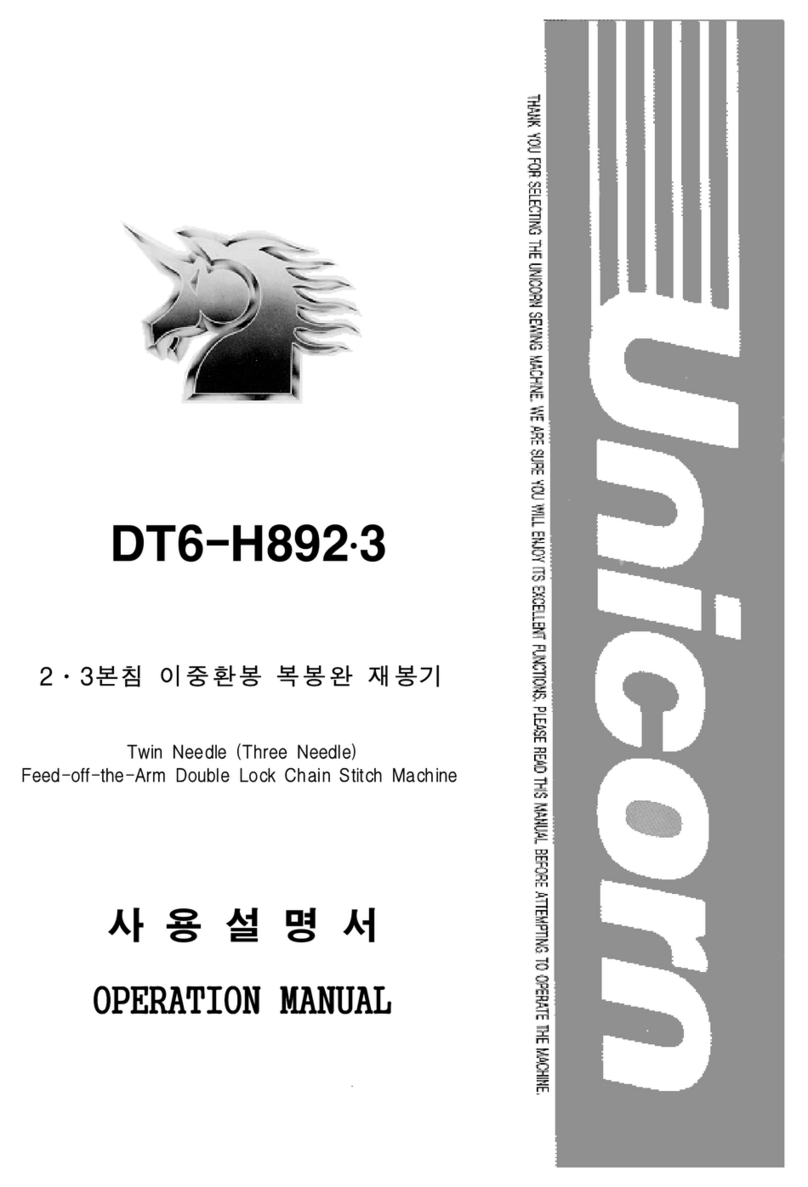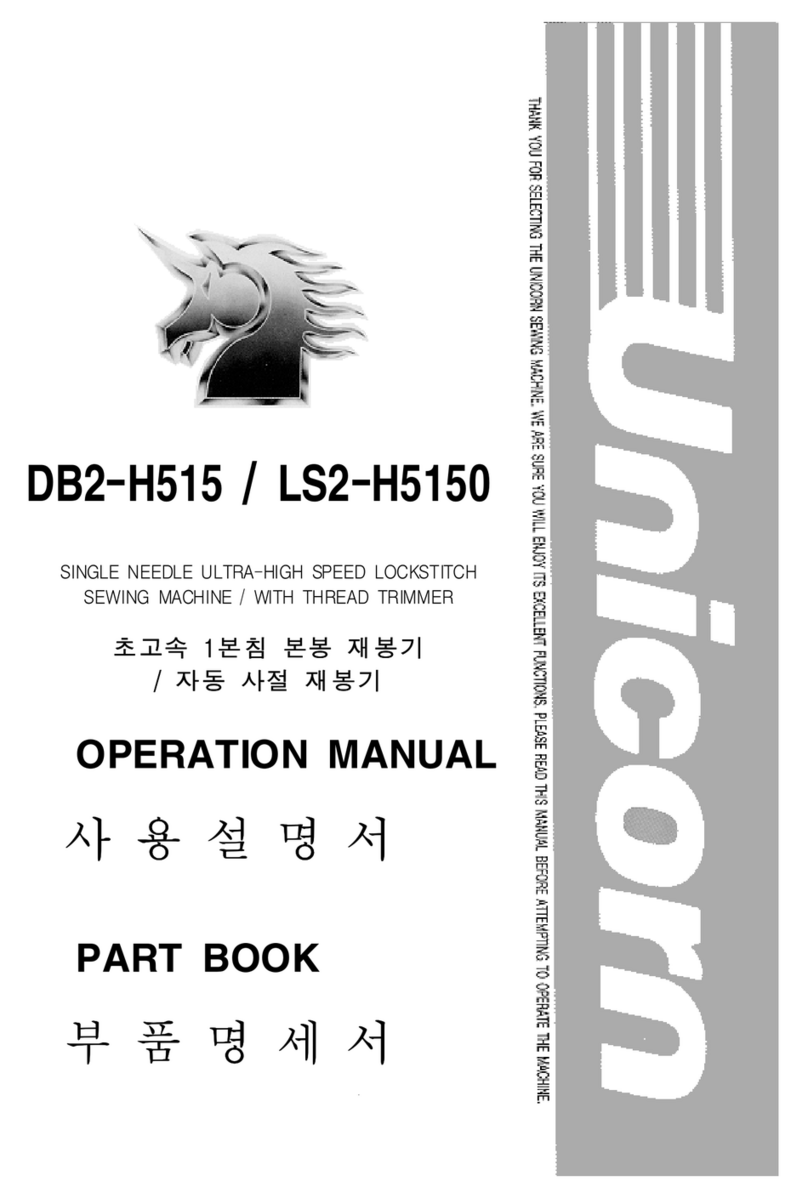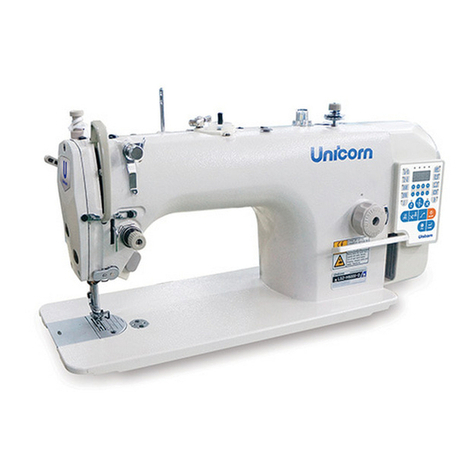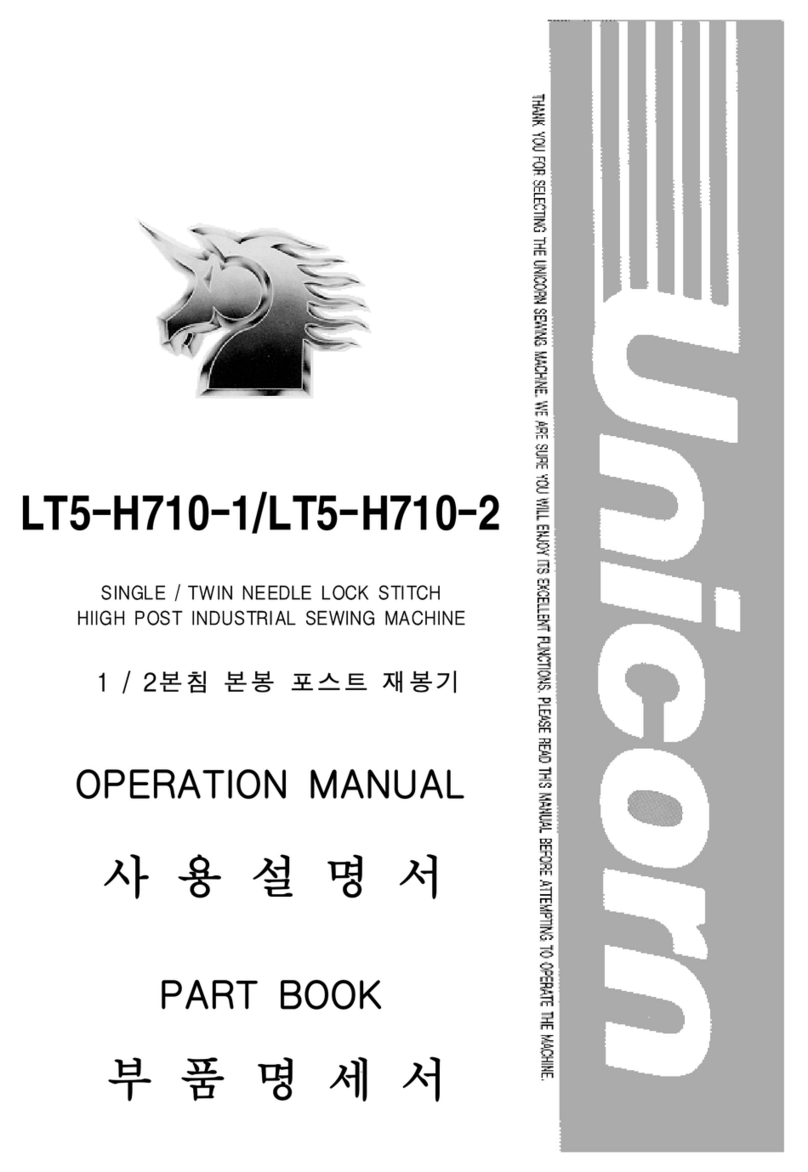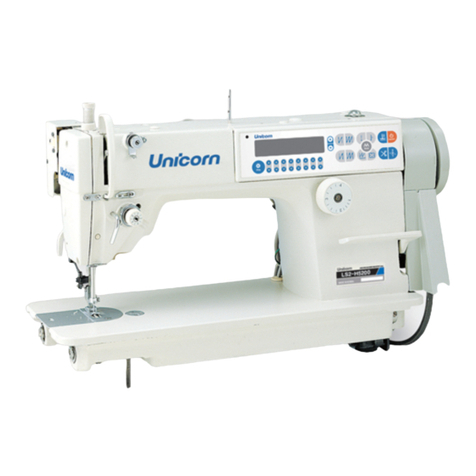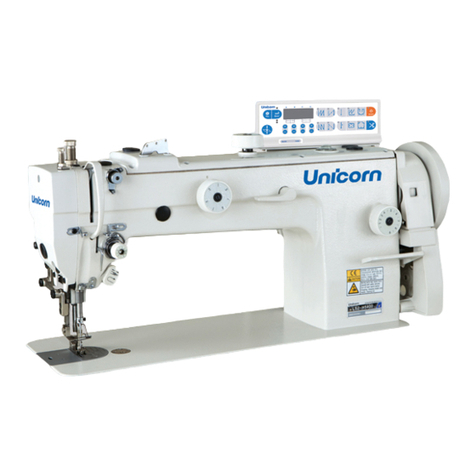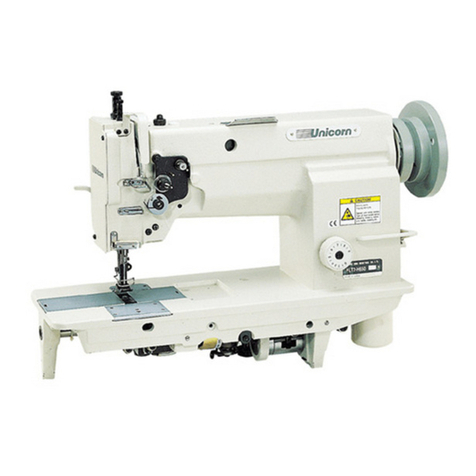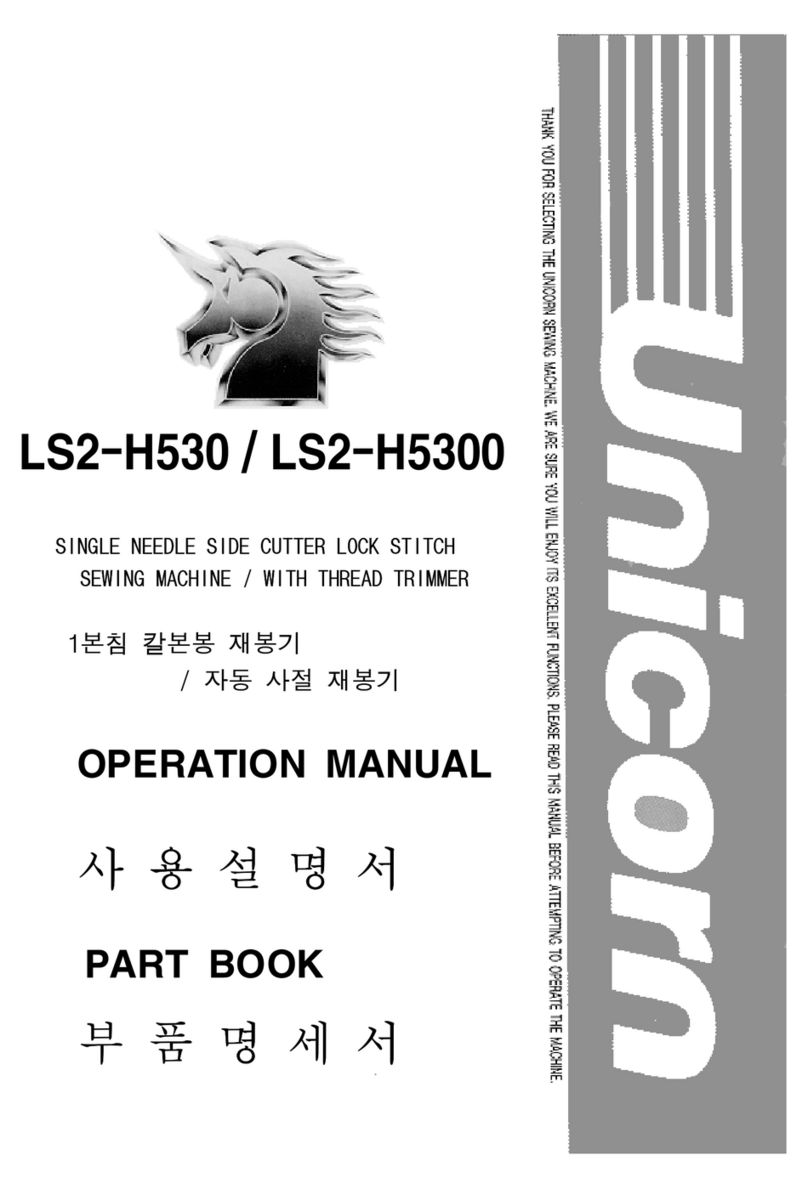
i
IMPORTANT SAFETY INSTRUCTIONS
Putting sewing systems into operation is prohibited until it has been ascertained that the sewing systems
in which these sewing machines will be built into, have conformed with the safety regulations in your
country. Technical service for those sewing systems is also prohibited.
9.
Tampering with the live parts and devices, regardless of whether the machine is powered, is
prohibited.
10. Repair, remodeling and adjustment works must only be done by appropriately trained technicians or
specially skilled personnel.
11. General maintenance and inspection works have to be done by appropriately trained personnel.
12. Repair and maintenance works of electrical components shall be conducted by qualified electric
technicians or under the audit and guidance of specially skilled personnel.
Whenever you find a failure of any of electrical components, immediately stop the machine.
13. Before making repair and maintenance works on the machine equipped with pneumatic parts such
as an air cylinder, the air compressor has to be detached from the machine and the compressed air
supply has to be cut off. Existing residual air pressure after disconnecting the air compressor from the
machine has to be expelled. Exceptions to this are only adjustments and performance checks done
by appropriately trained technicians or specially skilled personnel.
1. Observe the basic safety measures, including, but not limited to the following ones, whenever you use
the machine.
2. Read all the instructions, including, but not limited to this Instruction Manual before you use the
machine.
In addition, keep this Instruction Manual so that you may read it at anytime when necessary.
3. Use the machine after is has been ascertained that it conforms with safety rules/standards valid in
your country.
4. All safety devices must be in position when the machine is ready for work or in operation.
The operation without the specified safety devices is not allowed.
5. This machine shall be operated by appropriately-trained operators.
6. For the following, turn off the power switch or disconnect the power plug of the machine from the
receptacle.
6-1 For threading needle(s), looper, spreader etc. and replacing bobbin.
6-2 For replacing part(s) of needle, presser foot, throat plate, looper, spreader, feed dog, needle
guard, folder, cloth guide etc.
6-3 For repair work.
6-4 When leaving the working place or when the working place is unattended.
6-5 When using clutch motors without applying brake, it has to be waited until the motor stopped
totally.
7. If you should allow oil, grease, etc. used with the machine and devices to come in contact with your
17. The machine is only allowed to be used for the purpose intended. Other used are not allowed.
18. Remodel or modify the machine in accordance with the safety rules/standards while taking all the
effective safety measures. UNICORN assumes no responsibility for damage caused by remodeling or
modification of the machine.
15. Grounding the machine is always necessary for the normal operation of the machine. The machine
has to be operated in an environment that is free from strong noise sources such as high-frequency
welder.
16. An appropriate power plug has to be attached to the machine by electric technicians. Power plug
19.
Warning hints are marked with the two shown symbols.
Danger of injury to operator or service staff
Items requiring special attention.
